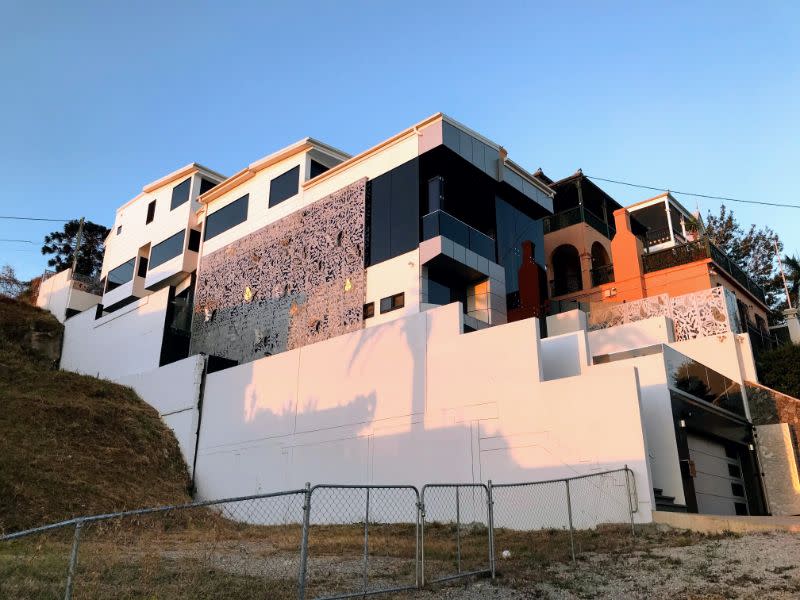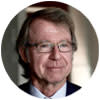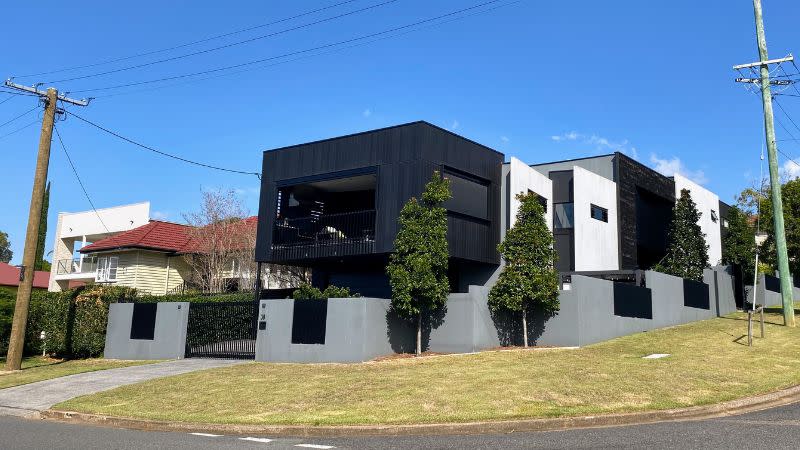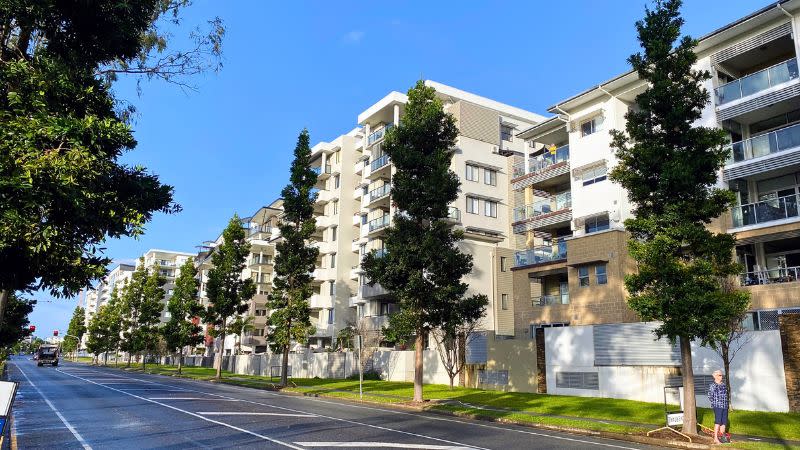
The Urban Developer’s latest Brisbane housing market insights reveal home prices in the Queensland capital sit 10.7 per cent below their recent peak, which is the third largest decline among capital cities.
This resource, updated periodically, will collate and examine the economic levers pushing and pulling Brisbane’s housing market.
Combining market research, rolling indices and expert market opinion, this evolving hub will act as a pulse check for those wanting to take a closer look at the movements across the market.
Brisbane median property prices % change
| Type | Month | Quarter | Annual | Median |
|---|---|---|---|---|
| All | 0.3% | 0.1% | -9.8% | $705,016 |
| Houses | 0.2% | -0.1% | -11.8% | $781,881 |
| Units | 0.9% | 1.1% | 1.5% | $498,374 |
^Source: CoreLogic - April 2023
Brisbane home prices retreated 1.7 per cent for the three months to March 2023, CoreLogic research showed.
This was a steeper decline than the national result, which was a 0.6 per cent fall in home values. The combined capitals gave up 0.4 per cent and the combined regions 1 per cent.
Regional Queensland home prices lost 0.8 per cent for the quarter.
Quarterly declines in national home values had been losing pace since September last year, CoreLogic said.
Brisbane home values were down 8.6 per cent for the 12 months to March 2023, slightly worse than the national yearly decline of 8 per cent.
Brisbane just kept its nose in front of the combined capitals’ decline of 8.7 per cent for the year.
Queensland regional home prices have held up better than the capital, shaving off 4.6 per cent.
In March, Brisbane home values were 10.9 per cent below the record high set in June 2022.
Sales volumes, meanwhile, trended slightly higher nationally in March to an estimated 44,124. On an annual basis, sales were 20.7 per cent lower year-on-year, , CoreLogic calculated.
In Brisbane, home sales volume sank 22.3 per cent for the year, compared with the combined capitals at 20.3 per cent and the Queensland regions at even 20 per cent.
Time on market
The median time it takes for homes in the capital city to sell leapt to 34 days, compared to a low of 19 days in the three months to November 2021. Regional Australia chalked up even longer delays, with properties taking 50 days on average to sell in the three months to March.
In Brisbane, it was taking 34 days compared with 13 for the previous corresponding period. In the Queensland regions it was taking 43 days, up from 20 for the same period in 2022.
Vendor discounts
The national median vendor discount had risen to 4.2 per cent from 3.1 per cent in the March quarter of 2022. Nevertheless, discounting rates in capital cities have backed off in 2023 so far.
In Brisbane, home vendors were dropping prices 4 per cent to make the sale, compared with a 2.8 per cent discount for the corresponding period.
Listings
In the four weeks to April 2 2023, the volume of new listings totalled 36,464 nationally. “New listings have now moved through a seasonal peak and are likely to trend lower through the cooler months of the year before rising in spring,” CoreLogic said.
In Brisbane, new listings were down 22.5 per cent on the equivalent four weeks in 2022, while total listsings were down 1.8 per cent.

Brisbane’s housing market: policy updates and trends
Caution Urged Over Mooted Sunset Clause Clampdown
Major reforms to prevent developers from invoking sunset clauses to terminate off-the-plan land sales contracts in a bid to take advantage of increasing property prices have been flagged in Queensland.
But the industry has warned the proposed changes come at a time “when the housing system can least afford uncertainty and instability and a clampdown on the access to funding”.
In a statement, the Queensland government indicated work was under way on amendments to legislation “to strengthen consumer protections” for off-the-plan residential property contracts for the sale of land.
Go-Ahead for 1100 Housing Lots on Sunshine Coast
Approval for 1100 new housing lots has been granted by the Queensland government for what has been dubbed the state’s fastest-growing residential community.
Aura, a 2350sq m urban development at Caloundra South on the Sunshine Coast, is on its way to becoming a new regional city of 50,000 people on the Sunshine Coast.
The latest slew of blocks given the green light brings the masterplanned community about halfway to its target of providing lots for 20,000 new homes.
‘Up Not Out’: Brisbane’s Inner City Strategy
Planners will run the rule over four Brisbane inner-city hotspots to assess their densification, connectivity and development opportunities.
The Brisbane City Council has released its Inner City Strategy document, which deputy mayor Krista Adams says will help to shape future growth of the economic powerhouse of south-east Queensland. The target areas for precinct renewal are Kurilpa, Albion, Newstead and Woolloongabba.
“We need to go up, not out,” Adams said.
What the experts are saying about Brisbane’s housing market

Tim Lawless
Head of Research
Corelogic
“The lift in interest rates could act to dampen some of the recent housing exuberance, although a range of other factors are likely to support the continued stabilisation in home values including low available supply, extremely tight rental conditions and higher demand via net overseas migration.
“Time will tell whether the latest rate hike is enough to send the recent positive trend in home values into reverse, however, our anticipation is the market will continue to level out on the expectation that interest rates have peaked and the imbalance between housing demand and supply will persist for some time yet.”

Shane Oliver
Chief Economist
AMP Capital
“I think a lot of buyers who were sitting on the sidelines waiting for lower prices have given up, thinking we better get in now, immigrants are returning and there's a shortage of rental property and an increase in rents.
“While it looks like the property market's probably bottomed, there is still a risk that we could have another leg down.”

Nicola Powell
Chief of Economics and Research
Domain
“House prices flatlined over the March quarter to provide the best outcome since mid-2022. Despite the easing rate of decline, house prices experienced the steepest annual decline in roughly eleven years.
“House prices are now 6.1 per cent below the June 2022 peak, down by about $53,000 and back to late 2021 pricing. Brisbane has seen the sharpest improvement of all capitals, along with Sydney and Melbourne.”

Louis Christopher
Managing director
SQM Research
“We did some extensive research and surveys with the banking sector in particular the non-bank sector in terms of the level of interest rate that would place people into distress, and it was suggested that it would be 4 per cent.
“The 3.6 per cent interest rate is still below that stress point, so unless it goes above 4 per cent, people will mostly be able to service their loans and avoid being forced to sell.”
Brisbane auction clearance rates
| Week | Clearance rate | Auctions/Sold | Total sales |
|---|---|---|---|
| Ending 25 March 2023 | 40% | 81 / 32 | $21,308,000 |
| Ending 1 April 2023 | 50% | 66/ 33 | $19,007,000 |
| Ending 15 April 2023 | 67% | 45 / 30 | $19,698,000 |
| Ending 22 April 2023 | 78% | 32 / 25 | $15,984,200 |
^Source: Domain - April 2023
Brisbane’s auction clearance rate pierced up through the 50 per cent mark in March [52.1 per cent] for the first time since May 2022, and managed to stay above in April [51.7 per cent], Domain’s latest monthly auction report showed.
Brisbane recorded the weakest clearance rate of the capital cities, but the Queensland capital was traditionally less keen on auctions than the rest of the country so “the outcome aligns with historical averages”, Doman said.

Brisbane residential rental vacancy rate
| City | Vacancy rate | Monthly % change | Vacancies | Net change |
|---|---|---|---|---|
| Brisbane | 0.7% | -0.1% | 2457 | 345▼ |
^Source: SQM Research - March 2023
Brisbane’s vacancy was steady for April at 0.7 per cent, Domain research showed.
“The recent stability shows the rental market is still moving away from the highly competitive conditions and record low vacancy rate last seen in February,” Domain said.
The national vacancy rate remained at its lowest point on record in April—for the fourth straight month—at 0.8 per cent.
“Despite remaining a landlords’ market, the continuous stretch of a steady vacancy rate suggests conditions have begun to stabilise for tenants.”
Brisbane rent prices
| Type | Rent | Monthly % change | Annual % change |
|---|---|---|---|
| Houses | $669.31▲ | 0.7%▲ | 16.7%▲ |
| Units | $498.41▲ | 3.9%▲ | 27.1%▲ |
^Source: SQM Research - Week ending March 20, 2023
Brisbane weekly home rents hit $604 in April, according to Domain, up 0.7 per cent for the month, 2 per cent for the quarter and 11.7 per cent for the year.
For houses in Brisbane, the median rent for April was $630 and for units it was $533, which were 0. 6 per cent and 1.1 per cent jumps respectively.
Australia's capitals have experienced the strongest annual rental increase on record due to a surge in overseas migrants and international students, combined with a significant shortfall in rental listings.
According to CoreLogic's national dwelling rental index, there was an increase of 0.8 per cent for April, which is up 2.8 per cent over the past three months and 10.1 per cent higher for the year.
The combined capitals annual rental increase of 11.7 per cent in the past year was a new record, largely driven by increasing demand for capital city units.

Queensland building approvals
| Dwelling | Approved | Monthly % change |
|---|---|---|
| Houses | 1714 | 18.8% |
| All dwellings | 3083 | 13.7% |
^Source: Australian Bureau of Statistics - February 2023
Queensland recorded a slump in seasonally adjusted home approvals, with a fall of 13.7 per cent in February, the latest Australian Bureau of Statistics data showed.
The bureau reported a 4 per cent rise in total dwelling approvals across the country in February, following a 27.1 per cent fall in January.
The increase was largely driven by an 11.3 per cent rise in approvals for private sector houses, after a 10-year low in January. However, the result remains 13.6 per cent lower than February 2022.
Bureau head of construction statistics Daniel Rossi said the decline in total home approvals in Queensland was part of a continuing downward trend since September 2022, following the conclusion of government stimulus and rising interest rates.
Across the country, total home approvals jumped in Tasmania (122.1 per cent), while South Australia (28.5 per cent), NSW (14.0 per cent) and Victoria (8.5 per cent) also managed increases.
Approvals for private sector houses rose in all states, including Queensland (18.8 per cent), Victoria (10.3 per cent), NSW (9.9 per cent), WA (2.4 per cent), and SA (1.6 per cent).

Queensland home loan lending indicators
| Type | Lending ($bn) | Monthly % change |
|---|---|---|
| New loan commitments for owner-occupier housing | 3.165 | 10.1% |
| New loan commitments for investor housing | 1.524 | 7.6% |
^Source: Australian Bureau of Statistics - March 2023
New Queensland owner-occupier first-home-buyer loans jumped 13.65 per cent to 1748 in March 2023, up from 1538 the month before.
Nationally, the number rose 15.8 per cent in March (seasonally adjusted), after reaching a five-year low in February, the latest Australian Bureau of Statistics research showed.
In January of 2021, the number of owner-occupier first-home-buyer loans in Queensland hit 3533 before steadily sinking to its February low this year.
ABS head of finance statistics Mish Tan said despite the monthly rise in owner-occupier first home buyer lending, the number of these commitments was 22 per cent lower compared to a year ago.
“During the second half of 2020, first home buyer lending reflected the strength in demand for housing during the pandemic, with new commitments peaking in January 2021 and declining by half since then,” Tan said.
The overall value of new loan commitments for housing rose 4.9 per cent to $24 billion in March 2023.
The value of total new owner-occupier loan commitments rose 5.5 per cent to $16 billion, while new investor loan commitments rose 3.7 per cent to $8 billion.
“The value of new owner-occupier loan commitments in March remained 25 per cent lower compared to the same time last year, while new investor loan commitments were 29 per cent lower,” Tan said.
The value of new owner-occupier housing loan refinances between lenders rose 3.9 per cent to another record high of $14.2 billion in March 2023. Borrowers continued to switch lenders for lower interest rates as the RBA’s cash rate rose.














